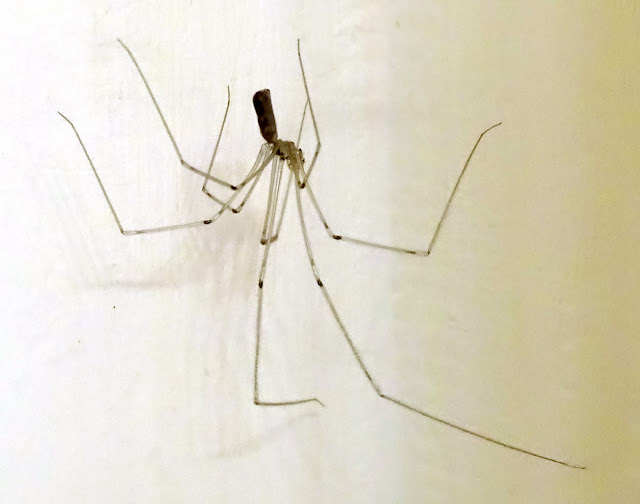For being so plain and impossible to tell apart, crows are very interesting. Maybe that's because they seem to find us interesting. At least they have a lot to say to each other about human activity.
They generally pick the highest point around to do this watching and commenting.
When the caw goes out, confederates come to the party. Almost any excuse will do.
They never do anything alone or quietly.
Their jousting matches have an all for one, one for all atmosphere. What looks like a fight might actually be teamwork to dismember a crab.
Because crows are very smart, and they're usually up to something. Wikipedia reports their ratio of brain size to body size is similar to apes and just slightly below humans. When compared to dogs and cats in an experiment testing ability to seek out food from three-dimensional clues, the crows out-performed the mammals.
Extended youth and a comical spirit help with group survival, but make for raucous behavior annoying to anyone trying to sleep in on a Saturday morning.
All that playful training helps develop the combat skills and moxie to take on adversaries.
Even a swivel-necked Snowy Owl has trouble watching everywhere at once.
Of course, what goes around comes around. The nimble sprinters of the air take care of their own.
Even if I can't tell them apart, Mr. and Mrs. Crow do it very affectionately and disappear into the crown of a tall evergreen to build their nest.
Mr. Crow diligently brings home the bacon and every other kind of delectable to the growing family. Soon the youngsters will be on the wing to watch for roadside casualties on Granite Street and scraps at the Lobster Pool, as well as rough and tumble tidbits in meadows and moors.


.JPG)
.JPG)

.JPG)






.JPG)
.jpg)
.jpg)
.jpg)
.jpg)
.jpg)
.jpg)

.jpg)



















.JPG)
,%20Family%20Polydesmidae,Genus%20Polydesmus%20.JPG)